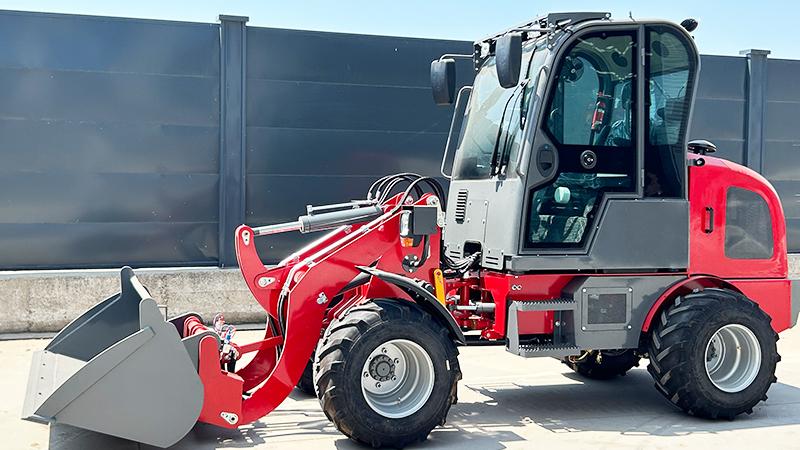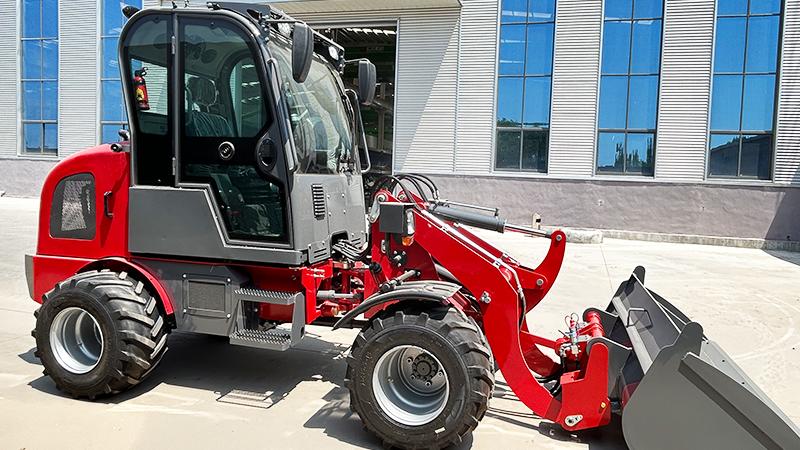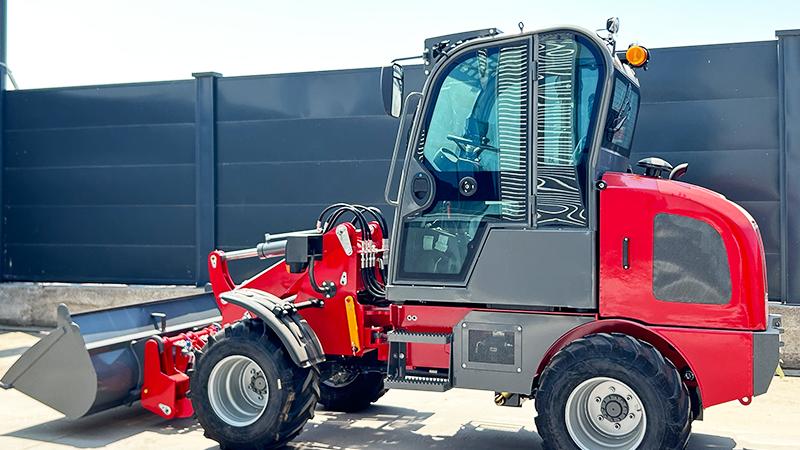The conversation surrounding heavy machinery has irrevocably shifted from pure power to a more nuanced balance of power, productivity, and paramount importance—fuel efficiency. In this critical arena, the wheel loader stands as a central figure, a ubiquitous workhorse on construction sites, in quarries, and across logistics hubs worldwide. The question of how a modern European-manufactured wheel loader compares in fuel consumption to its international competitors is not merely a technical curiosity but a fundamental business consideration impacting bottom lines and environmental footprints alike. European engineering has long been synonymous with a specific philosophy: a pursuit of precision, innovation, and often, a regulatory-driven push towards sustainability. This ethos is deeply embedded in the design and operation of wheel loaders produced by leading European OEMs such as Volvo CE, Liebherr, and JCB. These machines are engineered under the stringent umbrella of the European Union's Stage V emissions standards, arguably the most rigorous in the world, which mandate drastic reductions in particulate matter and nitrogen oxides. To comply without sacrificing performance, European manufacturers have had to pioneer integrated systems where the engine, transmission, hydraulics, and electronic controls work in a deeply synchronized harmony. This integration is the cornerstone of their fuel efficiency claims. Unlike approaches that might focus on a single component, the European method is holistic, suggesting that true efficiency is found not in the peak performance of one system, but in the optimized interaction of all systems. Consequently, a Euro-spec wheel loader often enters the market touting advanced common-rail diesel engines with sophisticated combustion management, variable displacement hydraulic pumps that deliver power on demand with minimal waste, and load-sensing hydraulics that precisely match hydraulic flow to the immediate task. The narrative pushed by these manufacturers is that their machines achieve more work per liter of fuel, a metric that resonates deeply in cost-conscious and environmentally regulated European markets. However, the global landscape is diverse, and the efficiency leadership of Euro wheel loaders is not an uncontested fact, but rather a compelling position in a complex, multi-faceted debate shaped by regional priorities, technological pathways, and operational philosophies.
To fully appreciate the position of the Euro wheel loader, it is essential to contrast it with its primary competitors: the predominantly North American and Asian models. North American manufacturers, like Caterpillar and John Deere, bring a formidable and distinct engineering tradition to the table. Their philosophy has historically emphasized robustness, immense power reserves, and longevity under the most punishing conditions, from North American mining operations to large-scale infrastructure projects. Their approach to fuel efficiency has often been more about optimizing the power train for high-load, continuous operation rather than the fine-tuned, sensor-driven efficiency of European models. For instance, North American wheel loaders might feature powerful, mechanically simpler engines that are easier to service in remote locations, prioritizing uptime and durability over the last percentage point of fuel savings. Meanwhile, Asian manufacturers, particularly Japanese giants like Komatsu and Hitachi, and Korean leaders like Doosan, have carved out a significant market share with a strong focus on reliability, value, and operational simplicity. Their wheel loaders are often praised for their excellent cost-to-performance ratio, incorporating proven, reliable technologies that may not be the absolute cutting-edge but are honed for dependable service. Their fuel efficiency strategies might lean towards well-calibrated conventional engines and hydraulics, offering solid, predictable consumption without the complexity and potential maintenance costs associated with the most advanced European systems. Therefore, when conducting a comparative analysis, one finds that the Euro wheel loader typically positions itself at the premium end of the efficiency spectrum, leveraging complex technology to achieve lower fuel burn. The North American counterpart might trade some peak efficiency for unparalleled toughness and power, while the Asian models often present a balanced, cost-effective solution that delivers reliable efficiency without the technological premium. This trichotomy means that declaring an outright "winner" is impractical; the most fuel-efficient wheel loader is context-dependent, varying with application, operator skill, maintenance standards, and regional fuel quality.
The real-world validation of fuel efficiency claims is where the theoretical advantages of the Euro wheel loader are put to the test. It is in the daily grind of moving aggregate, loading trucks, and handling materials that the sophisticated technologies prove their worth. The heart of this efficiency lies in the seamless integration of powertrain and hydraulics, managed by a central electronic brain. For example, many European wheel loaders feature advanced power management systems that automatically adjust engine speed and hydraulic pressure based on the resistance encountered by the bucket. When digging into a heavy pile, the system provides maximum power, but when the machine simply needs to reverse and travel, engine RPM drops significantly to conserve fuel. Furthermore, features like automatic idle shutdown, which turns off the engine after a preset period of inactivity, and improved cooling system efficiency contribute to incremental savings that accumulate substantially over thousands of operational hours. Perhaps the most significant advancement is in the realm of telematics and data analytics. European OEMs are leaders in providing sophisticated fleet management software, such as Volvo’s CareTrack or Liebherr’s LiDAT, which provide operators with detailed reports on fuel consumption, idle times, and productivity metrics. This data allows fleet managers to identify inefficient practices, train operators for better fuel economy, and make informed decisions about machine utilization. However, this high-tech approach carries a caveat: the efficiency is often highly dependent on optimal conditions and skilled operation. A poorly trained operator can easily negate the benefits of an advanced load-sensing hydraulic system through aggressive, inefficient work patterns. Moreover, the complexity of these systems can lead to higher repair costs and a need for specialized technician training, which might be a consideration in regions with less developed support networks. In contrast, a mechanically simpler wheel loader from another region might be less sensitive to operator technique and easier to repair locally, factors that can influence the total cost of ownership calculation beyond just the fuel bill.
Ultimately, the comparison of fuel efficiency transcends a simple fuel-consumption-per-hour figure and must be evaluated through the critical lens of Total Cost of Ownership (TCO) and long-term productivity. A Euro wheel loader, with its higher initial purchase price and potentially sophisticated maintenance requirements, justifies its position through a promise of lower lifetime operating costs, a significant portion of which is fuel. For an operation running multiple machines for multiple shifts over several years, even a 10-15% reduction in fuel consumption can translate into hundreds of thousands of dollars saved, directly impacting profitability. This calculation makes the Euro wheel loader an exceptionally compelling choice for large, intensive, and regulated operations in Europe and other environmentally conscious markets. However, for a smaller contractor or an operation in a developing region where initial capital outlay is a primary constraint, fuel price is lower, or technical support for advanced systems is limited, the value proposition shifts. In such scenarios, the durability and serviceability of a North American model or the affordability and reliability of an Asian wheel loader might present a more attractive overall TCO, even if their specific fuel consumption is slightly higher. The future of this competition is being shaped by the dual pressures of economic necessity and environmental responsibility. All major manufacturers are investing heavily in alternative powertrains, including electric and hybrid wheel loaders, with European manufacturers again being early pioneers. As the industry evolves, the definition of "efficiency" will expand to include energy source, carbon emissions, and noise pollution. For now, the Euro wheel loader remains a benchmark for diesel-powered fuel efficiency, a testament to a regulatory and engineering environment that forces innovation. Its superiority is not absolute but situational, offering a technologically advanced, low-consumption solution ideal for operators who can leverage its full potential, while other models continue to hold strong appeal for those whose priorities align with different strengths in the diverse and demanding world of heavy equipment.
Post time:Sep.24.2025



